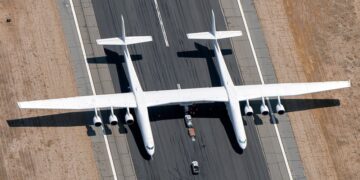When we dream about the future, the possibilities are endless. Everyday a new innovation is made, some of these innovations turn out to be impactive to the everyday lives of people. In the process these projects have made dreams a reality through creativity, adaptability and perseverance, and continue to shape the world around us. The most influential mobility projects list recognizes mobility projects that have transformed the sector and the entire business landscape.
Here are the top 10 most influential mobility projects in the world.
1. Boeing 747
The Boeing 747’s 1969 maiden flight changed travel forever–making commercial passenger air travel efficient, affordable and accessible to nearly everyone. Though sales started slow, the 747 would go on to become the most recognized plane in the world.
2. GPS
What started as a U.S. Department of Defense project in 1973 to create a stable satellite page navigation system has become nothing short of integral to everyday life. Allowed for civilian use in the 1980s, GPS is now the lifeblood of everything from internet of things applications to the precise time synchronization for cellular networks, banking systems and power grids–not to mention allowing everyday users to figure out how to get from Point A to B with a few taps.
3. Curitiba BRT
When the growing city of Curitiba, Brazil needed a flexible, efficient, budget-friendly public transportation option in the 1970s, its leaders landed on the idea of reinventing buses. The new system provided dedicated lanes, sleek glass stops and special prepayment options to move travelers quickly. The bus rapid transit system is now an infrastructure staple in cities around the world.
4. TGV
Originally designed as gas-turbine-powered turbotrains, France’s TGV (Train à Grande Vitesse) prototypes pivoted to electric power after the 1973 oil crisis. The move was a good one: It was one of the first ultra-fast bullet trains and sparked a copycat trend across Europe. The line still carries more than 110 million riders annually.
5. Prius
This first mass-produced hybrid electric car was a mega success when it debuted in 1997, taking the technology mainstream while tripling Toyota’s initial sales projections. The innovations didn’t stop there: Later Prius models featured advancements in lithium-ion battery design, regenerative braking, solar-powered cooling and plant-derived plastics.
6. Shanghai Maglev
It ranked as the world’s fastest magnetic levitation train when it debuted in 2004. And it shows no sign of slowing down: An upgrade now in the prototype stage could push speeds as high as 373 miles (600 kilometers) per hour.
7. Uber
Without a single car in its inventory, Uber managed to disrupt transportation around the world by ushering in app-enabled peer-to-peer ride-shares. While the company has seen plenty of pushback surrounding legislation, passenger safety and driver pay since its launch in 2009, it boasts 91 million monthly active users and revenues of US$11.3 billion.
8. McLaren F1
With a price tag of more than £500,000, it’s no surprise that McLaren sold only 64 road-ready vehicles from its F1 series during the car’s commercial production in the 1990s. But what buyers got is possibly one of the very best street-legal supercars ever built. Created entirely from carbon fiber–a first–the light body allowed McLaren to design a vehicle that could comfortably carry three passengers while keeping it faster than any car on the road.
9. Queen Mary 2
The largest ocean liner – and fastest cruise ship – ever built when it was christened in 2004, this luxury ship required just 40 percent more steel than a standard cruise ship, thanks to its ingenious design. Today, more than 2,500 passengers can pile on board for routine crossings of the Atlantic Ocean.
10. Tesla Roadster
The Roadster wasn’t the first electric car when it hit the market in 2008. But with the ability to go from 0 to 60 miles (97 kilometers) per hour in 3.7 seconds and reach 244 miles (393 kilometers) on a full charge, it was the first electric vehicle to match the performance of gasoline-powered sports cars. It has inspired automakers and drivers to look at electric-powered cars in a whole new way.


































































































































































































